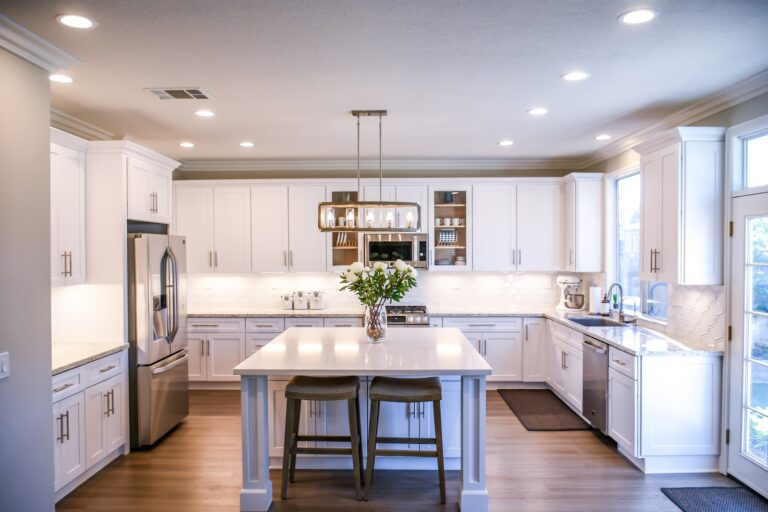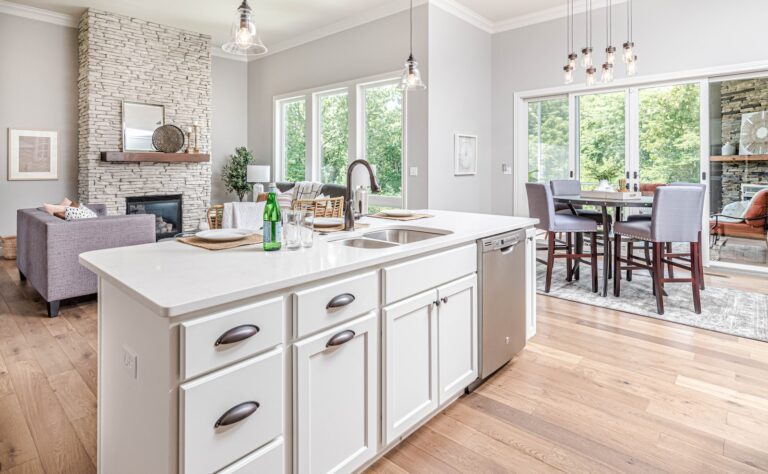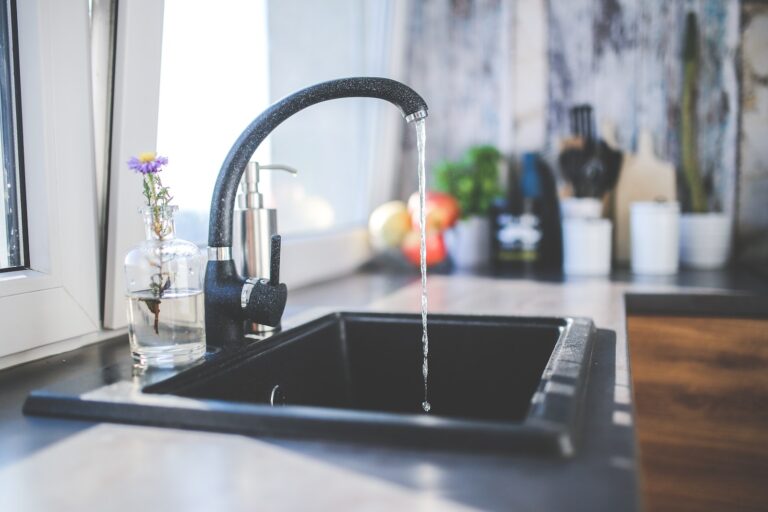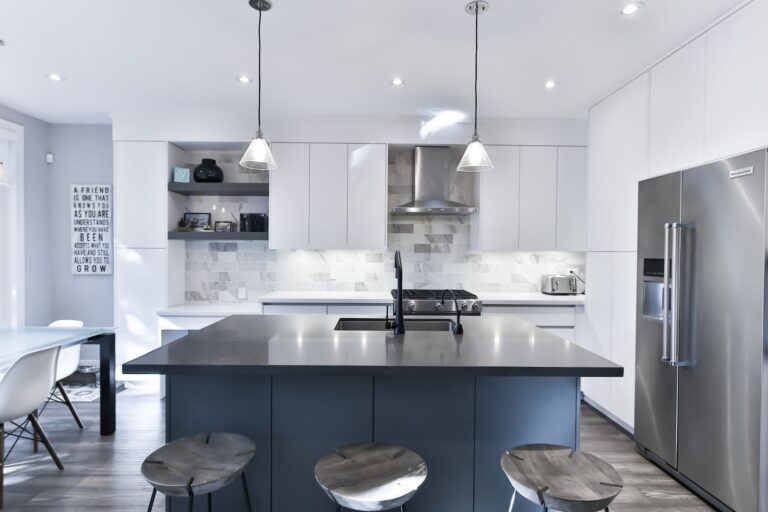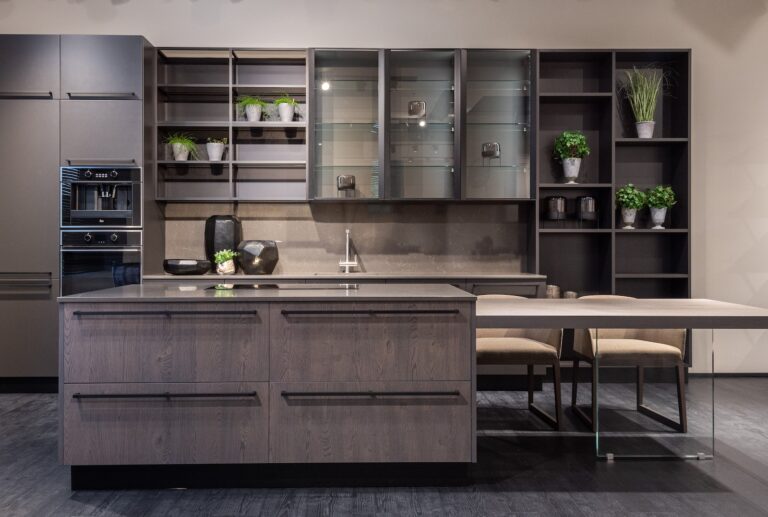Wet Kitchen Vs Dry Kitchen: Which Is Better For You In 2023?
When it comes to designing a kitchen, one of the key decisions to make is whether to have a wet or dry kitchen. A wet kitchen refers to a space that is equipped with a sink and other appliances for cleaning, while a dry kitchen is a space without a sink and is typically used for cooking and food preparation.
The choice between a wet and dry kitchen ultimately comes down to personal preference and lifestyle needs. While a wet kitchen may be more suitable for those who frequently cook and entertain guests, a dry kitchen may be a more practical option for smaller households or those who prefer a minimalist design. In this article, we will explore the pros and cons of both wet and dry kitchens, and help you determine which one is the right fit for your home.
| Wet Kitchen | Dry Kitchen |
|---|---|
| A wet kitchen is a space used for cooking and preparing food that involves the use of water. | A dry kitchen is a space used more for food storage and preparation, without the use of water. |
| Wet kitchens are typically found in Asian homes, where heavy cooking is done and meals are prepared fresh daily. | Dry kitchens are more common in Western-style homes, where convenience and quick meals are preferred. |
| Wet kitchens typically have a sink, stove, and refrigerator, as well as ample counter space for food preparation. | Dry kitchens may only have a refrigerator, microwave, and counter space. |
| Wet kitchens require more maintenance due to the use of water, and may need to be cleaned more frequently to prevent mold and mildew growth. | Dry kitchens are easier to clean and maintain, as they do not involve the use of water and are less prone to moisture-related issues. |
Chart Comparing: Wet Kitchen Vs Dry Kitchen
| Comparison | Wet Kitchen | Dry Kitchen |
| Definition | A kitchen that is primarily used for cooking and food preparation, and is equipped with a sink and water supply for cleaning dishes, utensils, and food. | A kitchen that is primarily used for food storage, meal planning, and light food preparation, and is not equipped with a sink or water supply. |
| Functionality | Designed for heavy-duty cooking and cleaning. The wet kitchen is equipped with appliances such as a stove, oven, and dishwasher, and a sink for easy cleaning. | Designed for light food preparation and storage. The dry kitchen may have appliances such as a refrigerator, microwave, and toaster, but they are not used for heavy cooking or cleaning. |
| Layout | The wet kitchen is typically located near the dining and living areas, and may have an open layout. | The dry kitchen is typically located away from the dining and living areas and may have a closed layout. |
| Maintenance | Requires regular cleaning and maintenance due to heavy-duty cooking and cleaning. | Requires less cleaning and maintenance due to light food preparation and lack of water supply. |
| Design | The wet kitchen may have a traditional design with a focus on functionality and practicality. | The dry kitchen may have a modern and stylish design with a focus on aesthetics and convenience. |
| Cost | The wet kitchen may be more expensive due to the need for plumbing and additional appliances. | The dry kitchen may be more affordable since it does not require plumbing or additional appliances. |
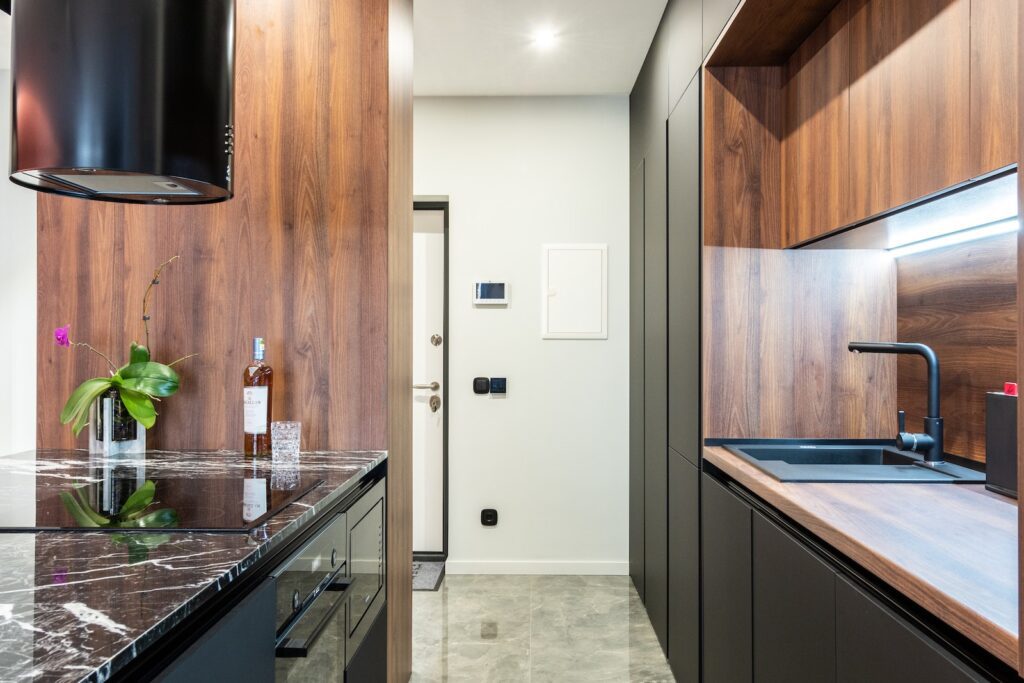
Wet Kitchen vs Dry Kitchen
In this article, we’ll take a look at the differences between wet and dry kitchens, and help you decide which one is right for your home.
What is a Wet Kitchen?
A wet kitchen is a type of kitchen design that includes a sink and other water sources. It is typically used for heavy cooking and food preparation, and is more common in Asian countries such as Malaysia, Singapore, and Taiwan. Some of the key features of a wet kitchen include:
Size
Wet kitchens are usually larger than dry kitchens, as they require additional space for the sink and other water sources. This can be a disadvantage if you have a smaller home or limited kitchen space.
Design
Wet kitchens are designed to be functional and practical. They often include features such as stainless steel countertops, tiled floors, and ample storage space for kitchen utensils and appliances. This can make them more expensive to install and maintain than dry kitchens.
Benefits
One of the main benefits of a wet kitchen is that it allows for more extensive cooking and food preparation. With a sink and other water sources readily available, you can easily clean and rinse ingredients, wash dishes, and perform other kitchen tasks. This can be especially useful if you enjoy cooking or frequently entertain guests.
What is a Dry Kitchen?
A dry kitchen is a type of kitchen that does not include a sink or other water sources. It is typically used for lighter cooking and food preparation, and is more common in Western countries such as the United States and United Kingdom. Some of the key features of a dry kitchen include:
Size
Dry kitchens are often smaller than wet kitchens, as they do not require additional space for a sink or other water sources. This can be an advantage if you have a smaller home or limited kitchen space.
Design
Dry kitchens are designed to be more aesthetically pleasing and visually appealing than wet kitchens. They often feature modern appliances and sleek countertops, and can be customized to fit your personal style and taste. This can make them more expensive to install and maintain than wet kitchens.
Benefits
One of the main benefits of a dry kitchen is that it requires less maintenance and cleaning than a wet kitchen. With no sink or other water sources, you don’t have to worry about water damage or plumbing issues. Additionally, dry kitchens can be more energy-efficient than wet kitchens, as they do not require as much water or electricity to operate.
Wet Kitchen vs Dry Kitchen: Which One is Right for You?
Ultimately, the decision between a wet kitchen and a dry kitchen comes down to your personal preference and lifestyle. If you enjoy cooking and need a space for heavy food preparation, a wet kitchen may be the best choice for you. On the other hand, if you prefer lighter cooking and want a kitchen that is more visually appealing, a dry kitchen may be the way to go.
Considerations
When deciding between a wet kitchen and a dry kitchen, there are several factors to consider. These include your budget, space limitations, lifestyle, and design preferences. Additionally, you should consult with a professional contractor or kitchen designer to ensure that your chosen kitchen design is safe, functional, and meets all local building codes and regulations.
Conclusion
Whether you choose a wet kitchen or a dry kitchen, it’s important to remember that both designs have their own unique benefits and drawbacks. By considering your personal needs and preferences, and consulting with a professional, you can choose the kitchen design that is right for you and your home.

Wet Kitchen vs Dry Kitchen Pros & Cons
-
Pros of a Wet Kitchen:
- Easy clean up of spills, stains, and messes.
- Allows for cooking methods that generate steam, smoke, and odors without affecting the rest of the home.
- Provides a separate area for cleaning and washing dishes, which can help keep the rest of the home cleaner.
- Great for those who love to cook and frequently prepare meals at home.
- Can add value to the home and be a desirable feature for potential buyers.
-
Cons of a Wet Kitchen:
- Requires extra plumbing and electrical work to install.
- Can be more expensive to build and maintain compared to a dry kitchen.
- May not be suitable for small homes or apartments with limited space.
- Can generate extra heat and humidity, which can be uncomfortable in warmer climates.
-
Pros of a Dry Kitchen:
- Generally more affordable to build and maintain compared to a wet kitchen.
- Allows for more flexibility in terms of layout and design.
- Requires less maintenance and cleaning compared to a wet kitchen.
- May be more suitable for homes with limited space or open floor plans.
-
Cons of a Dry Kitchen:
- May not be suitable for those who love to cook or frequently prepare meals at home.
- May not add as much value to the home compared to a wet kitchen.
- May not provide a separate area for cleaning and washing dishes, which can make the rest of the home more susceptible to messes.
- Can be difficult to contain cooking methods that generate steam, smoke, and odors, which can affect the rest of the home.
Final Decision: Wet Kitchen vs Dry Kitchen
After careful consideration of the advantages and disadvantages of wet and dry kitchens, the final decision depends on the preferences and needs of the homeowner. Both types of kitchens have their pros and cons, and choosing the right one depends on the lifestyle and cooking habits of the user.
For those who love to cook, a wet kitchen is the better option. The wet kitchen allows for a more versatile and comprehensive cooking experience, providing a space for activities such as washing, cutting, and cooking. It also allows for the installation of larger appliances such as ovens, stoves, and refrigerators, which can enhance the cooking experience and make it more efficient.
On the other hand, for those who prefer to keep their kitchen clean and organized, a dry kitchen is the way to go. A dry kitchen is less messy and less prone to spills and stains since it does not involve cooking or washing activities. It is also easier to maintain and requires less cleaning compared to a wet kitchen.
Another factor to consider is the size of the house. For smaller homes, a dry kitchen is a better option as it saves space and provides a more compact solution. A wet kitchen, on the other hand, is more suitable for larger homes with ample space for a separate cooking area.
Reasons to Choose a Wet Kitchen:
- Allows for a more comprehensive cooking experience
- Can accommodate larger appliances
- Provides a separate space for washing and cooking
Reasons to Choose a Dry Kitchen:
- Less messy and easier to maintain
- Requires less cleaning
- Saves space and provides a more compact solution
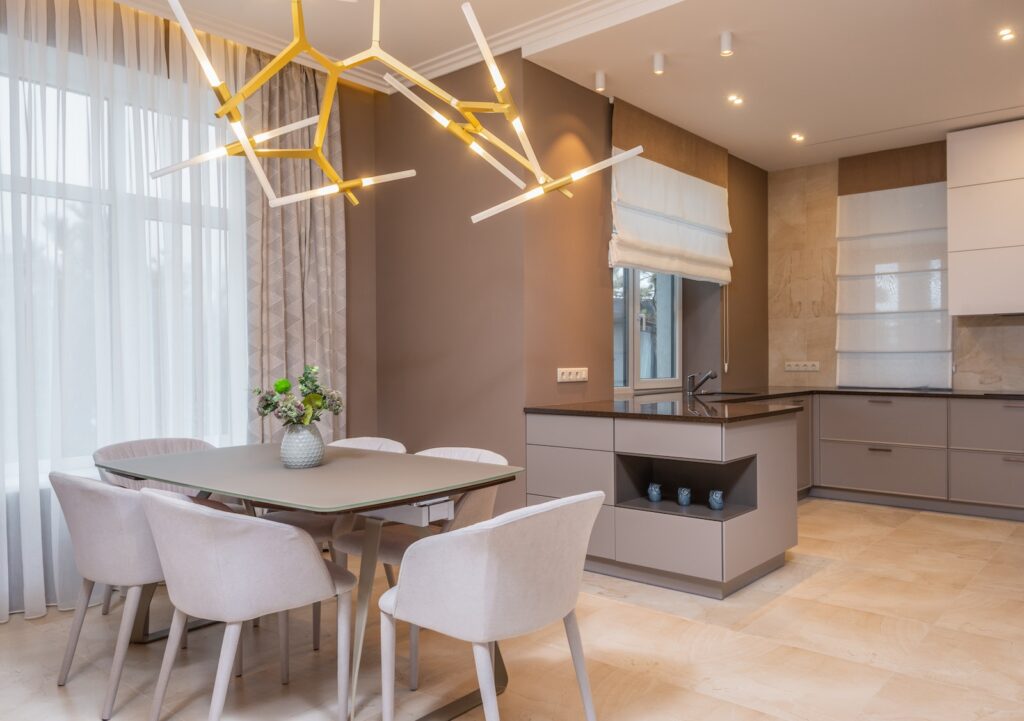
Frequently Asked Questions
Wet kitchen and dry kitchen are the two main types of kitchens in households. The wet kitchen is typically the area where food is prepared, while the dry kitchen is used for storage and food preparation. Here are some frequently asked questions about these two types of kitchens:
What is a wet kitchen?
A wet kitchen is a type of kitchen that is designed for cooking and food preparation. It is usually located in a separate area from the dining and living rooms and is equipped with a sink, stove, oven, and other appliances. The term “wet” refers to the fact that this type of kitchen is designed to handle the mess that comes with cooking, such as spills and splatters. A wet kitchen typically has a lot of counter space, as well as cabinets and drawers for storing cooking utensils and ingredients.
Because a wet kitchen is designed for cooking, it is usually equipped with a range hood or an exhaust fan to remove smoke and fumes. It may also have a separate ventilation system to keep the air clean and fresh. A wet kitchen is ideal for households that do a lot of cooking and baking, as it provides ample space and equipment for food preparation.
What is a dry kitchen?
A dry kitchen, on the other hand, is a type of kitchen that is designed for storage and food preparation. It is usually located near the dining and living rooms and is equipped with a refrigerator, microwave, and other appliances. The term “dry” refers to the fact that this type of kitchen is not designed for cooking and does not have a sink or stove. Instead, it is used for preparing snacks, making coffee, and storing food and drinks.
A dry kitchen typically has a lot of cabinets and shelves for storing dishes, glasses, and other kitchenware. It may also have a small countertop for food preparation and a sink for washing dishes. A dry kitchen is ideal for households that do not do a lot of cooking, as it provides a convenient and accessible place to store and prepare food.
What are the advantages of a wet kitchen?
A wet kitchen has several advantages over a dry kitchen. For one, it provides ample space and equipment for food preparation, making it ideal for households that do a lot of cooking and baking. Additionally, a wet kitchen is designed to handle the mess that comes with cooking, such as spills and splatters. It typically has a lot of counter space, as well as cabinets and drawers for storing cooking utensils and ingredients.
Another advantage of a wet kitchen is that it is usually equipped with a range hood or an exhaust fan to remove smoke and fumes. This helps to keep the air clean and fresh, which is important for maintaining good indoor air quality. Overall, a wet kitchen is a great choice for households that place a high priority on cooking and food preparation.
What are the advantages of a dry kitchen?
A dry kitchen also has several advantages over a wet kitchen. For one, it is designed for storage and food preparation, making it ideal for households that do not do a lot of cooking. Additionally, a dry kitchen is typically located near the dining and living rooms, making it convenient and accessible for preparing snacks and drinks.
Another advantage of a dry kitchen is that it is usually equipped with a refrigerator, microwave, and other appliances, making it easy to store and prepare food. It also has a lot of cabinets and shelves for storing dishes, glasses, and other kitchenware. Overall, a dry kitchen is a great choice for households that want a convenient and accessible place to store and prepare food.
Can a wet kitchen and a dry kitchen be combined?
Yes, a wet kitchen and a dry kitchen can be combined into one space. This is known as a “semi-wet kitchen” or a “semi-dry kitchen.” In a semi-wet kitchen, the area used for cooking and food preparation is separated from the area used for storage and food preparation. This is usually done by installing a partition or a countertop between the two areas.
A semi-dry kitchen, on the other hand, is a space that is primarily used for storage and food preparation, but also has a sink or a small cooking area. This is ideal for households that want the convenience of a dry kitchen, but also need a place to wash dishes or prepare simple meals. Overall, combining a wet kitchen and a dry kitchen can be a great way to create a versatile and functional space for cooking, eating, and entertaining.
In conclusion, the choice between a wet kitchen and a dry kitchen ultimately comes down to personal preference and lifestyle. Those who enjoy cooking and entertaining may prefer a wet kitchen due to its functionality and convenience. On the other hand, those who prioritize cleanliness and minimalism may opt for a dry kitchen.
Regardless of which type of kitchen you choose, it’s important to consider factors such as space, budget, and maintenance. With proper planning and design, both wet and dry kitchens can offer a stylish and functional space for cooking and socializing. So whether you’re a home chef or just looking for a space to prepare meals, there’s a kitchen design out there that’s perfect for you.

